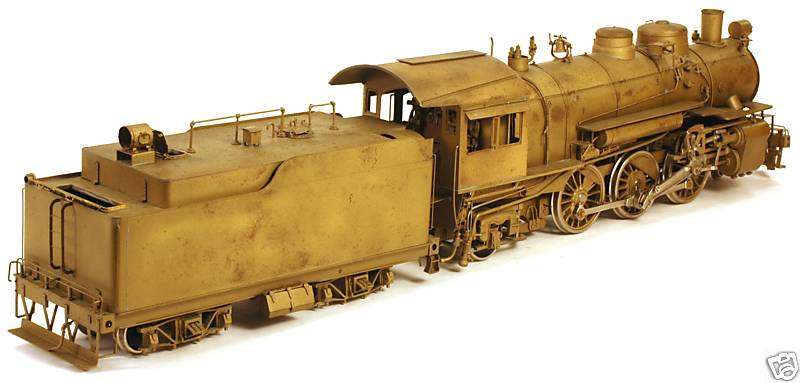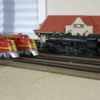The SantaFe 2-6-2 is a nice choice, but I am VERY enthusiastic about the Burlington O1a 2-8-2. Marvelous utilitarian locomotive that handled every type of service, and were the last steam locomotives in regular service on the CB&Q (Jan 1959). these locomotives took many forms, with Worthington and Elesco FWH's, oil burning and coal, conventional and L&B extended smokeboxes (allowing lignite and bituminous useage) and conventional coal side sheets on the tender vs. 45 degree canted in, for switching visibility.
Just a quick bit of history: it was a group of wrecks on both the Beardstown Division and the Colorado & Southern that brought back a herd of O1a's in the Fall of 1958. The C&S wrecks (2) prompted a frantic call from C&S HQ in Denver to the Q's Chicago HQ for help, as a number of diesels were destroyed in the wrecks. The Burlington dispatched 5 O1a's to Denver, where they worked for about 6 months in switching, local freight, and sugar beet service. The Beardstown Div wrecks brought 5 O1a's back for coal mine run service, 2 of which were diverted to Denver and were replaced. A total of 11 O1a's were in service that Fall, including one leased to the MO-based, coal hauling Bevier & Southern. Good old fantrip favorite 4960 was withdrawn from service at Herrin Jct., IL, in late Dec 1958, to pull it's first (12-28-58) of many, (including the Circus Train from Baraboo, WI-Milwaukee) fan trips. Burlington locomotives were nicely maintained, with oxide red cab roofs, graphite smokeboxes and fireboxes, a colorful Burlington Route herald on the tender, gold lettering, and generally a nice glossy freshly painted appearance.
I HAVE JUST RESERVED TWO! I would encourage all interested parties to get a reservation(s) in! And pairing up these locomotives with a predominately UP, GN, NP, D&RGW, ATSF roster makes sense, as the Burlington went to many "gateway" cities, such as Chicago, Mpls/StP, Denver, Billings, Omaha, Ks City, Cheyenne WY, etc. and mixed regularly with other roads' power.
Here is a picture of #5090, with an L&B front end: http://www.railarchive.net/randomsteam/cbq5090.htm















